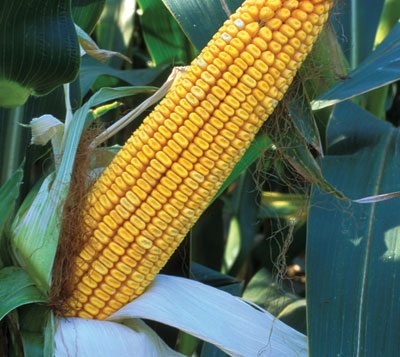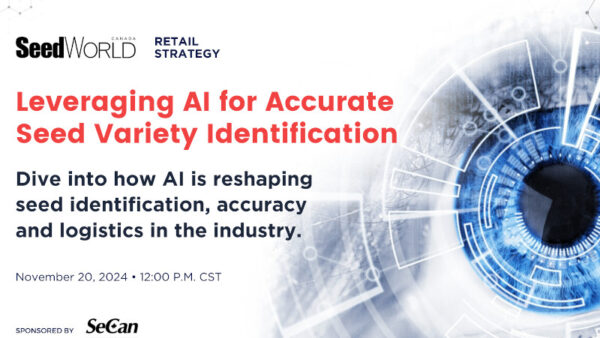Preparing for Patent Expiration
The seed industry aims to ease the transition of seed technology once patents expire.
During the past year and a half, a core group of individuals representing the U.S. seed industry have been working through the details of creating a framework to help transition from patented to generic biotech events.
In 2014, the first widely grown plant biotechnology event will lose patent protection with many more to come in the following years.
“This creates a challenge for the industry,” says Bernice Slutsky, American Seed Trade Association vice president of science and international affairs. “Even though an event comes off patent here in the United States, it’s still highly regulated around the world and that’s important to keep in mind.”
ASTA and the Biotechnology Industry Organization have been proactive in leading the efforts to develop a mechanism which ensures international regulatory approvals and proper product stewardship are maintained so U.S. commodity exports are not impeded.
The Accord is Born
The two organizations put together a joint working group comprised of big and small seed companies, trait providers and those who license traits. Stakeholders such as the North American Export Grain Association and American Soybean Association have regularly been invited to provide input to make sure their concerns are being addressed.
“While there is an immediate need to develop a framework to enable a clear and predictable transition to generics, the U.S. value chain needs a long-term and sustainable solution and we want to make sure everyone is on board with our efforts,” says Matt O’Mara, BIO Food and Agriculture Section director of international affairs.
“Our main goal is to make sure we protect the entire value chain from trade disruption.”
— Matt O’Mara
O’Mara and Slutsky explain that a framework called the Accord is being developed to create a smooth transition from proprietary events to generic events in the seed industry.
“Our main goal is to make sure we protect the entire value chain from trade disruption,” O’Mara says. “In addition, we want to provide a clear path forward for the transition from proprietary to generic events, encourage business opportunities and support innovation, which includes protecting intellectual property rights and providing fair compensation for proprietary regulatory data and authorizations.”
A few key elements of the Accord are that it is voluntary and open to any entity to become a signatory, it’s a contractually binding process and there is increasing responsibility dependent on whether the signatory has a patented biotech event or intends to commercially utilize the event once its patent expires.
The Accord will be comprised of two agreements. The first agreement, the Generic Event Marketability and Access Agreement, addresses access to single, off-patent biotech events and the maintenance of regulatory approvals. This agreement will encompass a relatively straightforward approach such that the single, off-patent event will be made available and regulatory authorizations will be maintained for a specific period of time by the originator with no compensation. Once the originator decides to no longer maintain authorizations, there will be a transition process should entities be interested in continuing to market the generic event.
The second, more detailed agreement is called the Data Use and Compensation Agreement. This agreement also focuses on access to a generic event but in a more complete way, addressing use and compensation for proprietary regulatory data for any use, including the creation of proprietary stacked seed products containing a generic event.
Challenges to Address
As ASTA has progressed though the development of the Accord, one reoccurring complication is, with the exception of the U.S. Department of Agriculture and the U.S. Food and Drug Administration, most regulatory authorities require new and separate authorizations for any new combination of stacked biotech events, even if the single events in a stacked product have received authorization. Therefore, the regulatory data for the single events in a stacked product is an important component of the regulatory dossier for a stacked product.
It’s also important to keep in mind that the regulatory requirements for stacked products don’t change, regardless of the intellectual property rights status of events comprising the stack.
“The first agreement, referred to as the Generic Event Marketability and Access Agreement, should be finished this summer,” Slutsky says, “while the second agreement, known as the Data Use and Compensation Agreement, needs more time to address all the finer details.”
Slutsky equates the development of the Accord with the proverbial onion. “Some of the issues are complex,” she says. “Right when you think you’ve made some headway, another layer is peeled back and there’s a whole other set of issues that need to be taken into consideration.”
Creating Transparency
O’Mara and Slutsky both say that, in the end, the Accord will provide transparency and predictability so that all parties involved know what is expected when patents expire. To help companies better understand the Accord, a guidance document will be created once the legal language to the two approaches is complete.
“For seed companies, it provides a clear means to take advantage of commercial opportunities of off-patent biotech traits while ensuring domestic and international regulatory approvals are maintained,” they note.
The Accord is still being drafted, but ASTA and BIO remain committed to the effort and to the development of a framework that meets the needs of stakeholders and the U.S. seed industry.
Julie Douglas
Editor’s Note: Julie Douglas is the director of communications for the American Seed Trade Association.
Accord at a Glance
A few key elements of the Accord being developed by the American Seed Trade Association and the Biotechnology Industry Organization are:
• It’s voluntary and open to any entity to become a signatory.
• It’s a contractually binding process.
• There is increasing responsibility dependent on whether the signatory has a patented biotech event or intends to commercially utilize the event once its patent expires.
• It will be comprised of two new agreements: the Generic Event Marketability and Access Agreement and the Data Use and Compensation Agreement.












